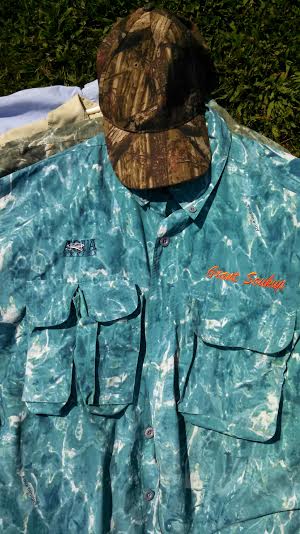 Fishermen are always looking for the fish they hope to catch. Fish are also looking for anything that might catch them. Survival depends upon being alert and aware of movements, reflections, and vibrations.
Fishermen are always looking for the fish they hope to catch. Fish are also looking for anything that might catch them. Survival depends upon being alert and aware of movements, reflections, and vibrations.
Fish are also sought by predators such as osprey, Eagles, otters, bigger fish and a boatload of other hungry critters. Their unique “Fish Eyes”, located on the side of their face help them to see more. Imagine if your eyes were positioned just in front of your ears. This allows them to see in every direction.
Once you know what and where a fish sees, you can start to develop tactics to help you stalk your quarry. Camouflage hats and clothes are a good place to begin. Fish do not see color. They do not have the cone shaped cells in their eyes to do so. They are quite capable of distinguishing brightness and patterns. Brighter colors reflect more light and are seen more easily.
Fish Camo should allow you blend into your background. If you are open water on a sunny day, then blue is a good choice. The trees along a trout stream suggest green. A rock walled canyon may be gray. Generally, earth tones tend to be best. If you dress in colorful Mardi Gras attire, chances are you may only catch a cold.
Start wearing your crossover hunting camo or work clothes for a start. There is some fish camo gear available but it never seems to catch on. The shirts in the picture were made by AQUA Designs. Wearing brightly colored hats and shirts is great for a picture but in reality you are scaring the fish.
Fish do not have ears. They feel vibrations along their lateral line which covers their body. Any movement, thud, bump, or plop can be immediately felt. They are also quick to identify movements made from wings, casts, or walking. If you trudge along the banks and boats like a Sasquatch, you will catch fewer fish.
Fish have 2 blind spots that fishermen can take advantage of. They can’t see a foot or so in front of their nose unless they turn their head from side to side. Fish eyes do no move in their sockets. Their peripheral field of view intersects a foot or so in front of their nose. They also can’t see directly behind them. This is why it is normally best to approach the fish upstream from the tail end. When casting to a fish, drop the fly or lure several feet in front of them so that they don’t get spooked and have a chance to hear and see it. Kneeling allows you to stay unseen as you get closer. The light refraction of the water must also be considered.
Fish areas where the fish are protected by moving water, structure, and debris. You may get snagged but you have a greater chance to hook up with a fish. There is a huge difference between “Fishing” and “Catching”.
It is always best to not be seen or heard when fishing for success!
Montana Grant
For more Montana Grant visit www.montanagrantfishing.com